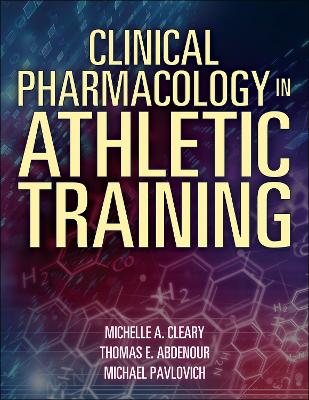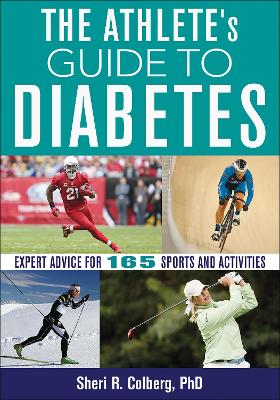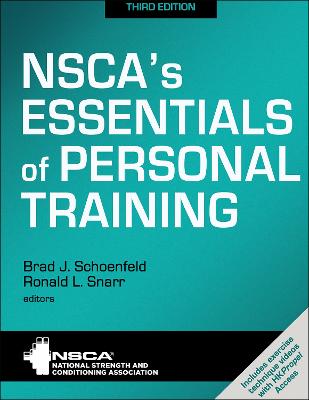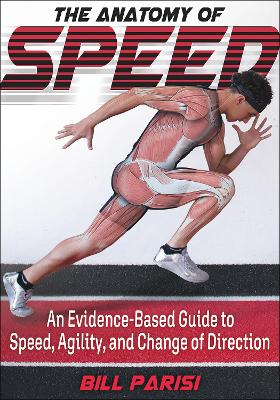Acute and Emergency Care in Athletic Training
 -15%
portes grátis
-15%
portes grátis
Acute and Emergency Care in Athletic Training
Cleary, Michelle; Walsh Flanagan, Katie
Human Kinetics Publishers
03/2019
464
Dura
Inglês
9781492536536
15 a 20 dias
1520
Chapter 1. The Interprofessional Health Care Team
Characteristics of a Good Team
Sports Medicine Setting
Breakdowns in Teamwork
Effective Practices in Teamwork
Professional Attributes of Effective Health Care Providers
Therapeutic Behaviors
Summary
Chapter 2. Prevention and Risk Management Strategies
Risk Management
Infectious Diseases
Standard Precautions
Exposure Control Plans
Legal Responsibility
Summary
Chapter 3. Planning for Emergencies
Epidemiology of Medical Emergencies in Sports
Emergency Planning in Sports
Developing an Emergency Action Plan for Each Venue
Developing Acute Care and Emergency Protocols for Major Trauma and Medical Emergencies
Consulting With Institutional Authorities and Working With Local EMS Providers
Obtaining and Maintaining Emergency Equipment and Supplies
Review the EAP and Training Personnel
Communicating During an Emergency
Mass Care and Catastrophic Incidents
Post-Catastrophic Injury or Post-Critical Incident Plan
Evidence for Best Practices in Emergency Preparedness
Summary
Chapter 4. The Emergency Examination
Scene Size-Up
Initial Assessment
Identify the Chief Complaint or Concern
Focused Assessment
Monitoring the Critically Injured or Ill Patient
Reassessment
Patient Hand-Off
Evidence for Injury Scoring Systems
Summary
Chapter 5. Emergency Medications and Administration
Medical Direction and Oversight
Best Practices for Safe Administration of Medication
Medication Administration
Oral Medication Administration
Sublingual Medication Administration
Metered-Dose Inhaler Administration
Oxygen Administration
Nebulized Medication Administration
Emergency Medication Injection
Intravenous Access
Summary
Part II. Immediate Management of Acute Injuries and Illnesses
Chapter 6. Immediate Management of Bleeding, Shock, and Immunologic Emergencies
Overview of the Circulatory System
Hemorrhage
Shock
Anaphylactic Reactions and Immunologic Emergencies
Evidence
Summary
Chapter 7. Immediate Management of Musculoskeletal Injuries
Overview of the Structures
Classification of Injuries
Shoulder Dislocation
Elbow Dislocation
Finger Dislocation
Hip Dislocation
Knee Dislocation
Ankle Dislocation
Humeral Fractures
Colles' Fracture
Pelvis Fracture
Femur Fracture
Tibia-Fibula Fractures
Ankle Fractures
Management of Lower-Leg Fractures
Compartment Syndrome
Ring Avulsion
Summary
Chapter 8. Traumatic Injuries to the Head and Face
Overview of the Head and Face
Overview of Head Injuries
Scalp Lacerations
Skull Fracture
Concussion
Chronic Traumatic Encephalopathy
Intracranial Pressure
Intracerebral Contusion
Epidural Hematoma
Subdural Hematoma
Headaches
Stroke
Seizures
Altered Mental Status
Overview of Facial Injuries
Corneal Abrasion and Foreign Objects in the Eye
Retinal Detachment
Hyphema
Tympanic Membrane Rupture
Facial Fractures
Temporomandibular Joint Dislocation
Dental Injuries
Laryngeal Injuries
Summary
Chapter 9. Traumatic Injuries to the Spine
Anatomy and Physiology of the Spine
Pathophysiology
Emergency Medical Care of Injuries to the Spine
Equipment Removal
Summary
Chapter 10. Injuries of the Thorax and Lungs
Overview of Anatomical Structures in the Thorax
Respiratory Assessment
Using Supplemental Oxygen
Airway Maintenance
Rib Fracture
Sternoclavicular Joint Injury
Pulmonary Embolism
Pneumothorax, Hemothorax, and Hemopneumothorax
Asthma
Summary
Chapter 11. Life-Threatening Cardiac Conditions
Overview of the Cardiovascular System
Epidemiology of Sudden Cardiac Death
Etiology and Pathophysiology of Acute Cardiac Conditions
Field Assessment Techniques for Emergent Cardiac Conditions
Immediate Management of Sudden Cardiac Arrest
Emergency Preparedness for Sudden Cardiac Arrest
Clinical Decision Making
Evidence: Cardiovascular Screening
Evidence: Factors Affecting Survival After Sudden Cardiac Arrest
Summary
Chapter 12. Injuries and Illnesses of the Abdominopelvic Region
Overview of Anatomical Structures in the Abdomen and Pelvis
Trauma to Abdominal Organs
Injuries to the Liver and Spleen
Injury to the Kidneys
Appendicitis
Acute Abdominopelvic Concerns for Female Athletes
Acute Trauma to Male Genitals
Summary
Chapter 13. Life-Threatening Metabolic Emergencies
Overview of the Anatomical Structures in Metabolic Emergencies
Diabetes
Hypoglycemia and Hyperglycemia
Summary
Chapter 14. Exertional Sickling and Rhabdomyolysis
Exertional Rhabdomyolysis
Sickle Cell Trait
Evidence: Factors That Increase Risk of Exertional Rhabdomyolysis
Summary
Chapter 15. Environmental Emergencies
Lightning Emergencies
Heat-Related Emergencies
Cold-Related Emergencies
Altitude-Related Emergencies
Summary
Appendix A. Model Exposure Control Plan
Appendix B. SCAT-5
Chapter 1. The Interprofessional Health Care Team
Characteristics of a Good Team
Sports Medicine Setting
Breakdowns in Teamwork
Effective Practices in Teamwork
Professional Attributes of Effective Health Care Providers
Therapeutic Behaviors
Summary
Chapter 2. Prevention and Risk Management Strategies
Risk Management
Infectious Diseases
Standard Precautions
Exposure Control Plans
Legal Responsibility
Summary
Chapter 3. Planning for Emergencies
Epidemiology of Medical Emergencies in Sports
Emergency Planning in Sports
Developing an Emergency Action Plan for Each Venue
Developing Acute Care and Emergency Protocols for Major Trauma and Medical Emergencies
Consulting With Institutional Authorities and Working With Local EMS Providers
Obtaining and Maintaining Emergency Equipment and Supplies
Review the EAP and Training Personnel
Communicating During an Emergency
Mass Care and Catastrophic Incidents
Post-Catastrophic Injury or Post-Critical Incident Plan
Evidence for Best Practices in Emergency Preparedness
Summary
Chapter 4. The Emergency Examination
Scene Size-Up
Initial Assessment
Identify the Chief Complaint or Concern
Focused Assessment
Monitoring the Critically Injured or Ill Patient
Reassessment
Patient Hand-Off
Evidence for Injury Scoring Systems
Summary
Chapter 5. Emergency Medications and Administration
Medical Direction and Oversight
Best Practices for Safe Administration of Medication
Medication Administration
Oral Medication Administration
Sublingual Medication Administration
Metered-Dose Inhaler Administration
Oxygen Administration
Nebulized Medication Administration
Emergency Medication Injection
Intravenous Access
Summary
Part II. Immediate Management of Acute Injuries and Illnesses
Chapter 6. Immediate Management of Bleeding, Shock, and Immunologic Emergencies
Overview of the Circulatory System
Hemorrhage
Shock
Anaphylactic Reactions and Immunologic Emergencies
Evidence
Summary
Chapter 7. Immediate Management of Musculoskeletal Injuries
Overview of the Structures
Classification of Injuries
Shoulder Dislocation
Elbow Dislocation
Finger Dislocation
Hip Dislocation
Knee Dislocation
Ankle Dislocation
Humeral Fractures
Colles' Fracture
Pelvis Fracture
Femur Fracture
Tibia-Fibula Fractures
Ankle Fractures
Management of Lower-Leg Fractures
Compartment Syndrome
Ring Avulsion
Summary
Chapter 8. Traumatic Injuries to the Head and Face
Overview of the Head and Face
Overview of Head Injuries
Scalp Lacerations
Skull Fracture
Concussion
Chronic Traumatic Encephalopathy
Intracranial Pressure
Intracerebral Contusion
Epidural Hematoma
Subdural Hematoma
Headaches
Stroke
Seizures
Altered Mental Status
Overview of Facial Injuries
Corneal Abrasion and Foreign Objects in the Eye
Retinal Detachment
Hyphema
Tympanic Membrane Rupture
Facial Fractures
Temporomandibular Joint Dislocation
Dental Injuries
Laryngeal Injuries
Summary
Chapter 9. Traumatic Injuries to the Spine
Anatomy and Physiology of the Spine
Pathophysiology
Emergency Medical Care of Injuries to the Spine
Equipment Removal
Summary
Chapter 10. Injuries of the Thorax and Lungs
Overview of Anatomical Structures in the Thorax
Respiratory Assessment
Using Supplemental Oxygen
Airway Maintenance
Rib Fracture
Sternoclavicular Joint Injury
Pulmonary Embolism
Pneumothorax, Hemothorax, and Hemopneumothorax
Asthma
Summary
Chapter 11. Life-Threatening Cardiac Conditions
Overview of the Cardiovascular System
Epidemiology of Sudden Cardiac Death
Etiology and Pathophysiology of Acute Cardiac Conditions
Field Assessment Techniques for Emergent Cardiac Conditions
Immediate Management of Sudden Cardiac Arrest
Emergency Preparedness for Sudden Cardiac Arrest
Clinical Decision Making
Evidence: Cardiovascular Screening
Evidence: Factors Affecting Survival After Sudden Cardiac Arrest
Summary
Chapter 12. Injuries and Illnesses of the Abdominopelvic Region
Overview of Anatomical Structures in the Abdomen and Pelvis
Trauma to Abdominal Organs
Injuries to the Liver and Spleen
Injury to the Kidneys
Appendicitis
Acute Abdominopelvic Concerns for Female Athletes
Acute Trauma to Male Genitals
Summary
Chapter 13. Life-Threatening Metabolic Emergencies
Overview of the Anatomical Structures in Metabolic Emergencies
Diabetes
Hypoglycemia and Hyperglycemia
Summary
Chapter 14. Exertional Sickling and Rhabdomyolysis
Exertional Rhabdomyolysis
Sickle Cell Trait
Evidence: Factors That Increase Risk of Exertional Rhabdomyolysis
Summary
Chapter 15. Environmental Emergencies
Lightning Emergencies
Heat-Related Emergencies
Cold-Related Emergencies
Altitude-Related Emergencies
Summary
Appendix A. Model Exposure Control Plan
Appendix B. SCAT-5












